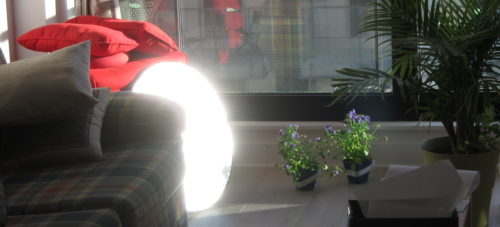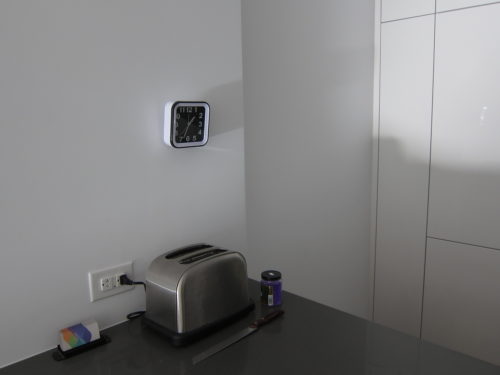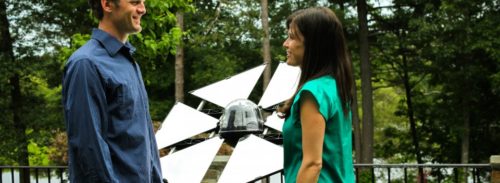One of my best remedies against gloominess is sunlight.

I have a fairly luminous apartment in theory: a big window, lightly-colored floors and white walls. Therefore, when strong direct sunlight hits the floor, the difference is striking: the whole place glows up. The tricky part, however, is making the most of the sun’s presence.
- In Montréal, you get around 8.5 hours of daylight in the heart of the winter (vs nearly 16 hours during the summer solstice). During the cold season, the sun is at a very low angle which, combined with the presence of a 9 floors building in front of my window, means I don’t get much more than two hours of direct hard light on those rare sunny days. In January, it shows up around eleven o’clock and disappears within the span of 20 minutes around 13h30, whenever it goes below the angle of 25 degrees above the horizon.
- Paradoxally, I don’t get that much more sun during the summer because the sun is too vertical (¬_¬)
- My apartment is long (“shotgun style”) with windows only on one side, so the inner side remains too dark for my tastes.
Therefore, I tried multiplying the potential of those precious sunbeams with a photographic reflector.

As you can see, this works out fairly well in theory:


In practice, however, the sun moves constantly throughout the day, so the lighting can never remain optimal for long.
As a typical tech geek I thought, “There’s got to be a way to automate this. Something like a solar tracker with mirrors and programmed to point the beam onto a fixed target”. And sure enough, there is a specific term for this: a heliostat.

Serendipity led me to read a bunch of related topics as usual, such as Wikipedia’s article on daylighting. Also worthy of note are the related articles in the “See also” section at the bottom, including active daylighting and passive daylighting. As it happens, most of the concepts out there, including light tubes, are nothing new (or at least not as revolutionary as the Low Line project makes it sound).
Anyway. Back to heliostats. If it’s any good idea, you can be sure a bunch of people thought of it too, and that some of them actually made it into a commercial product. So far I have found the tourneseul, heliostaat.nl, heliotrack, and potentially the most interesting in terms of price and ease of use, the Wikoda Sunflower:

A concern of mine is the fact that I live in a fairly windy area (30-50 km/h wind gusts are not unusual) and I fear such a machine could break, either falling down (if set on a mobile tripod) or from stress to the motors. I was told that the Wikoda Sunflower has been tested to resist to 80km/h winds, however.
Currently, Wikoda’s Sunflower is sold out. There is a disc-shaped v2 in the works, it’ll be interesting to see when the new model comes out and at what price. So far, I haven’t found anything else that comes close to Wikoda’s product, everything else seems complicated and/or many times more expensive—if I recall correctly, the Sunflower was around 300 USD (to which you need to add international shipping, currency exchange, custom fees/taxes, etc.).
Even though it would set me back a few hundred bucks, a turn-key heliostat providing illumination similar to an apartment one floor higher would provide priceless health & mood benefits, and may also easily offset the pricetag difference with appartments on upper floors (+2-3k per floor level, sometimes up to 15k per floor for big appartments).
Do you have any experience with active daylighting? Have you found other interesting systems to brighten your personal space? Let me know.